
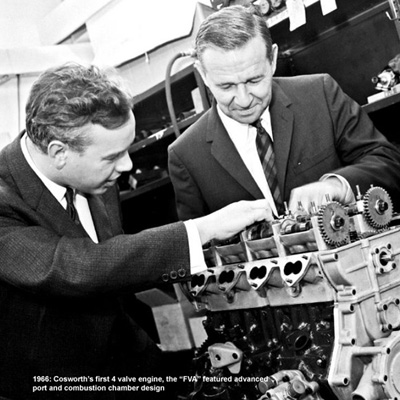
Cosworth Engines
[ Vol.1 | Vol.2 | Vol.3 | Vol.4 | Vol.5 ]
[ Vol.1 - Modified OHV | SCA | FVA | BDA ]
[ Vol.2 - DFV | DFV in Japan ]
[ Vol.3 - Fomula 1 | Indy/Champ car ]
[ Vol.4 - inline 4 ]
[ Vol.5 - Others ]
|
Since it was formed in 1958 by Mike Costin and Keith Duckworth, Cosworth has become the most successful engine manufacturer in history, with a string of driver and manufacturer titles to its credit in a wide range of formulae with impressive performances in IRL, Champ Car, WRC, sportscars and MotoGP. Cosworth began life in a small workshop in London in 1958. However, things quickly grew and a move to larger premises was soon required. The company moved to north London, where it began working on the development of the Ford 105E engine. Cosworth actually achieved its first victory when Jim Clark took a win in the Formula Junior category in his Lotus 18 at Goodwood in 1960. By the mid 1960s, the company had moved to Northampton where bigger prospects were around the corner. In 1966, Duckworth signed a contract with Ford to develop a new three-liter Formula One engine, and the legendary DFV was born. It got its first taste of victory in 1967, when Jim Clark again provided the maiden victory at the Dutch Grand Prix. The DFV, in subsequent development guises, went on to dominate the sport for 15 years and clinched 155 race wins during that time. During the 1970s Cosworth engines crossed the Atlantic to take the Indy/CART world by storm. There, the DFX version of the F1 powerplant began to take an incredible 151 race wins in a 14-year reign, culminating in ten driver's championships and ten Indianapolis 500 victories. コスワースはその歴史において頻繁にオーナーが変わっている。1980年にはUEI(United Engineering Industries)がコスワースを買収するが、そのUEIも1988年にはCarlton Communicationsに買収される。1990年にはVickersがコスワースを買収するが、1998年にはそのVickersがフォルクスワーゲングループに買収された。これに対し、コスワースとの関係が深いフォードが、フォルクスワーゲンと交渉し、コスワースのレーシング部門のみ「コスワース・ レーシング」として買収することとなった。 しかし2004年にはフォードは、ジャガーF1チームと共にコスワース・レーシングをCARTシリーズのオーナーでもあるジェラルド・フォーサイス(Gerald Forsythe)とケビン・カルコーベン(Kevin Kalkhoven)に売却した。それが現在のコスワースグループであり、英ノーザンプトン以外、北米トーランス(Torrance)、インディアナポリス(ndianapolis)、モーレスビル(Mooresville)およびインドのプネー(Pune)に工場が存在する。 一方、レーシングエンジン部門以外は「コスワース・テクノロジー 」(CT)としてフォルクスワーゲングループに残り、アウディやアストンマーチンへのエンジン供給を行っていたが、2004年12月に独マーレーグループに売却された。 |
Modified OHV / SCA / FVA / BDA - Based on Kent block
1959 -2002: About Kent unit 1959 -2002●Ford Kent Pre Crossflow -- Original --
This engine is easily determined from the Ford 'Crossflow' by the type of head since the carburettor and the exhaust are both on the right hand side of the engine. 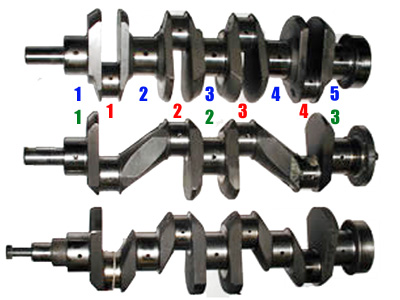 Std 77.60 mm stroke X Flow/BD - 12 Bolt
The 1500 Pre-X/Flow provided the base for the Lotus Twin Cam, where selected blocks were bored to larger capacity. The Mk2 Cortina saw the L-block, which is cast with thicker walls and is ideal for large capacity Pre-X/Flows - it’s quite rare now though! ●Lotus Twin Cam
Lotus required a low cost, compact, yet powerful engine for the 1962 Lotus Elan. Colin Chapman chose to use the 116E thin wall cast iron block first used by Ford in the Consul Classic, the Classic Capri and later to be used in the Cortina. 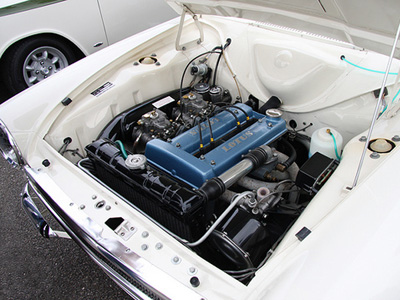
While the basic engine design was relatively sound, being of 5 main bearing construction, it was by no means a performance engine. To achieve the power required, Chapman commissioned Harry Mundy, then technical editor for Autocar magazine, to design a double overhead camshaft conversion. This comprised an aluminium cylinder head and an aluminium front cover assembly containing the water pump and the chain driven camshaft drive. 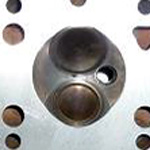
The cylinder head has hemispherical combustion chambers similar to that first used by Peugeot on their 1912 Grand Prix car and subsequently refined by Jaguar in their XK engine of the 1950s ●Ford Kent Crossflow -- Heron head combustion chamber --
This engine was introduced in the Ford Mk2 Cortina and differs from the earlier units by having the carb on the left and the exhaust on the right - hence, ‘crossflow.’ 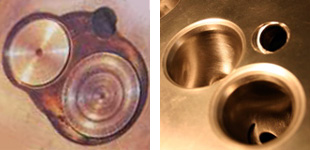 LH: early head / RH: late head
Early blocks bore the casting marks 681F and capacities you’ll find are, 940, 1098, 1298 and 1599.  A711 (LH) & A711M (RH) block
The engine was also fitted to 1.3 and 1.6 Mk1 Fiestas in the 80’s with a 771M casting. These feature no side engine mounts plus a shortened water pump and timing chain/crank area. ●Ford Cosworth BDA / BDG
Originally conceived by Mike Hall (Cosworth Engineering) as a belt driven version of Cosworth’s FVA power plant, this engine is based on the Ford 1600 X/Flow bottom end. ●Ford Valencia -- revised to suit front wheel drive installation --
The Valencia was a revised unit basically for use in the Fiesta, used from 1976 to 1988 and available in 0.95, 1.1, 1.3 formats. It was also fitted to Mk3 Escorts and to 1.3 Orions from 1986 onwards. ●HCS -- to meet with tightening European emissions legislation--
The HCS - High Compression Swirl - version came after the Valencia and was used from 1988-1995 in 1.0, 1.1 and 1.3 sizes, chiefly in the Fiesta Mk3, Orion Mk2 and Escorts from Mk3 to Mk5, all in front wheel drive format. ●Endura-E -- revisions to combat noise and harshness --
The Endura-E is virtually identical to the HCS and was used from 1995-2002 in the Fiesta Mk4 plus the Ka. The only main differences are an alloy sump and variations in the inlet and manifold system. Both are distributorless, using a crank trigger and coil pack for ignition. |
| Modified OHV |
| Type | Year | Size | Output | Description |
|---|---|---|---|---|
| Mk I | 1959 | 997cc | -- | Experimental, unsold, tried out Duckworth's radical cam design ideas |
| Mk II | 1960 | 997cc | 75 Bhp. | First Cosworth production engine, Formula Junior, A2 cam, initiated Lotus connection |
| Mk III | 1960 | 997cc | 85-90 Bhp. | Formula Junior engine, A3 cam, stronger bottom end, optional dry sump |
| Mk IV | 1961 | 1098cc | 90-95 Bhp. | Formula Junior, bored out Mk III |
| Mk V | 1962 | 1340cc | 80 Bhp. | First road car engine, lightly modified 109E for Lotus Seven |
| Mk VI | 1962 | 1340cc | 105 Bhp. | Mk V racing version, very few made as displacement not suitable for any racing formula |
| Mk VII | 1962 | 1475cc | 120 Bhp. | Bored out Mk VI to get closer to 1.5 Litre class limit, still 3 main |
| Mk VIII | 1963 | 1498cc | 90 Bhp. | Similar to Mk V but bassed on 5 main 116E, many sold, used in Lotus Seven |
| Mk IX | 1963 | 1498cc | 120-125 Bhp. | Racing version of Mk VIII |
| Mk X | 1963 | 1498cc | -- | One-off experimental version of Lotus twincam |
| Mk XI | 1963 | 1098cc | 100-110 Bhp. | Updated Formula Junior engine, made magic 100 bhp/litre, big seller, 109E block |
| Mk XII | 1963 | 1594cc | 140 Bhp. | Racing version of Lotus twincam, dry sump, stock rods and crank |
| Mk XIII | 1963 | 1594cc | 140 Bhp. | Formula B racing twincam, upgraded Mk XII with steel rods and crank |
| Mk XIV | 1963 | 1498cc | 100 Bhp. | Developed Mk VIII for Lotus Seven |
| Mk XV | 1963 | 1594cc | 140 Bhp. | Racing twincam, wet sumped for Cortina, close to XIII |
| Mk XVI | 1963 | 1498cc | 140 Bhp. | Racing twincam, spec of Mk XIII for 1.5 litre limit |
| Mk XVII | 1964 | 1098cc | 120 Bhp. | Modified Junior engine with downdraft inlets brazed onto cast iron head, few made |
| MAE | 1965 | 997cc | 100 Bhp. | Formula 3 engine, single downdraft, many sold as kits |
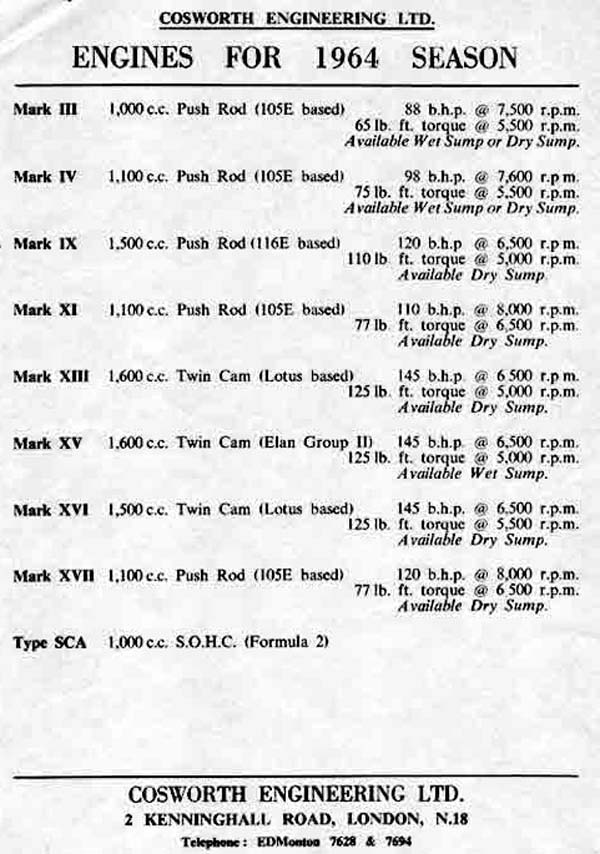
1960: 997 cc for Formula Junior
These were modified versions of the 1,000 cc Ford Kent engine for Formula Junior.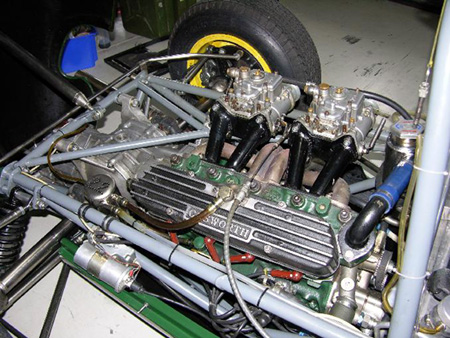
1962: 1340 cc for Lotus 7
Cosworth began its associating with Lotus Cars by boring the Kent out to 1,340 cc for the Lotus 7.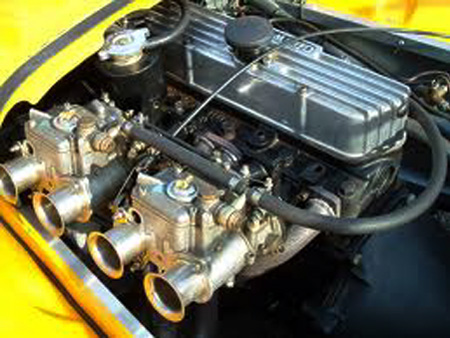
1963: 1498 & 1594 cc for Formula B & Lotus Cortina
1,500 cc and 1,600 cc units were developed in 1963 for use in Formula B and sports car racing, as well as for powering the Lotus Cortina.1965: MAE(997 cc) for Formula 3
The final evolution of the Cosworth-Kent, in 1965, was the MAE, when new rules were introduced in Formula 3 allowing 1,000 cc engines.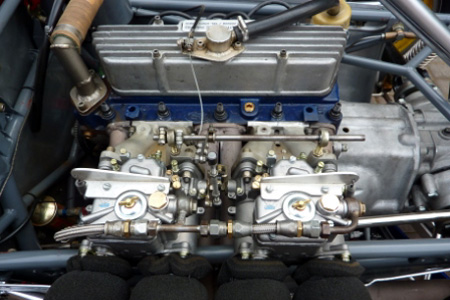
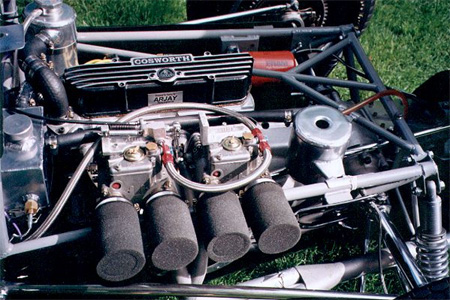
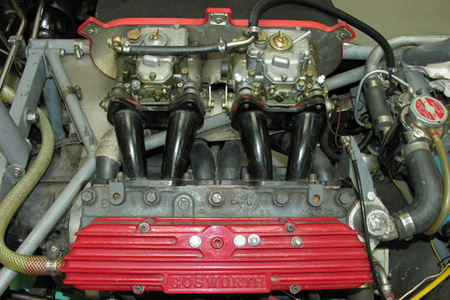
The domination of this engine was absolute as long as these regulations lasted. As Cosworth had some difficulty facing the demand, the MAE was mainly sold as a kit.
A year before the introduction of the MAE the SCA was introduced, a 1000 cc engine based on a Ford Cortina 116E block that raced in Formula 2, and featured the first totally Cosworth-designed head.
| SCA Variant |
| Type | Year | Size | Output | Description |
|---|---|---|---|---|
| SCA | 1964 | 997cc | 115-140 Bhp. | Formula 2, first Cosworth designed head, aluminum, 116E block, 5 main |
| SCB | 1964 | 1498cc | 175 Bhp. | Experimental only |
| SCC | 1965 | 1098cc | 135 Bhp. | Bored out SCA for North American Sports Car racing, Many SCAs conveted to SCCs, chain drive cam |
SCA - Single overhead Cam, A type
1964: SCA
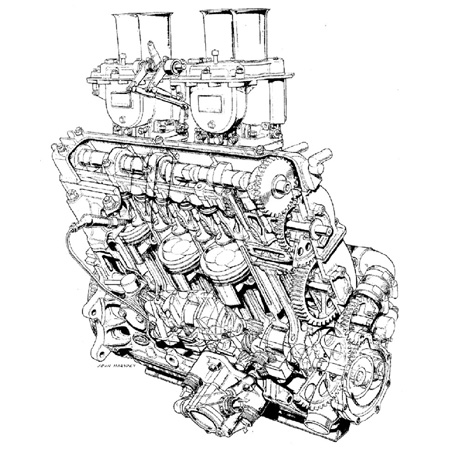
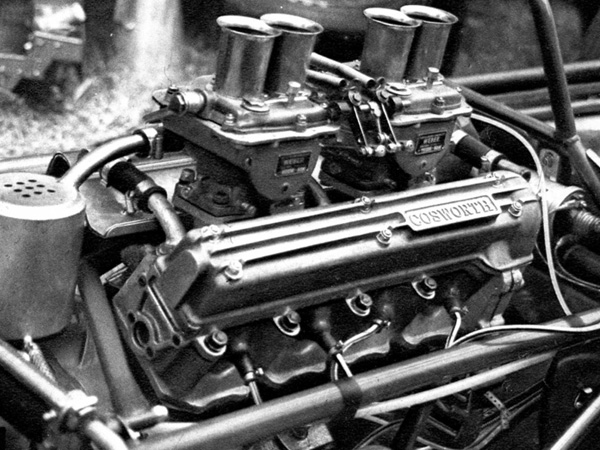
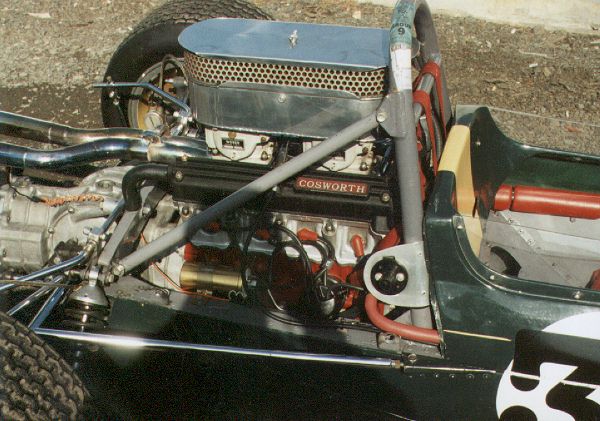
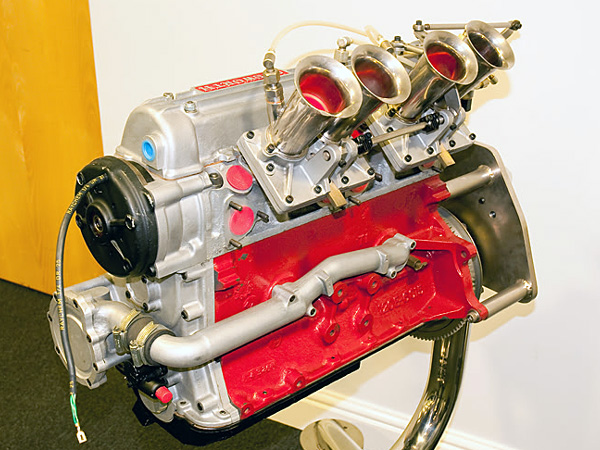
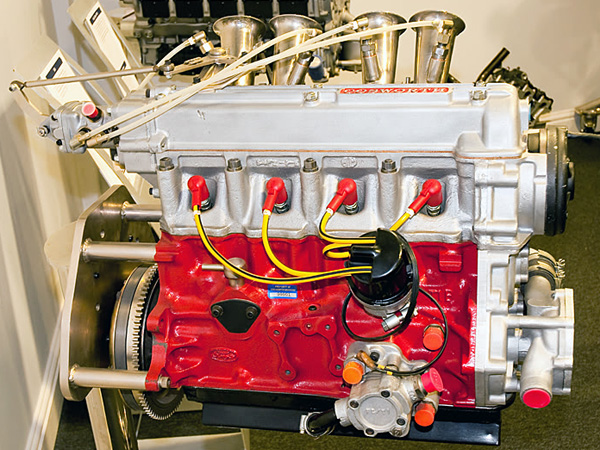
SOHC 2valve - Heron head
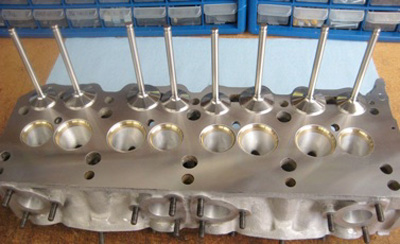
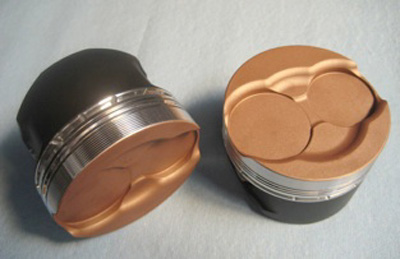
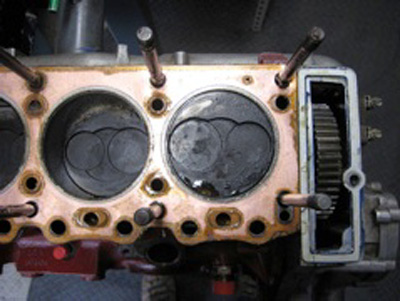
1964 Lotus Type 32 - Monocoque F2
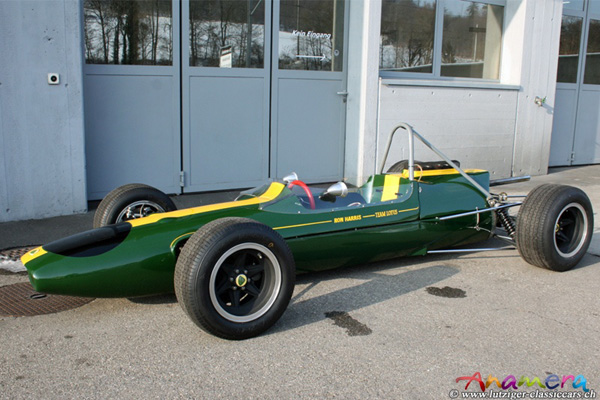
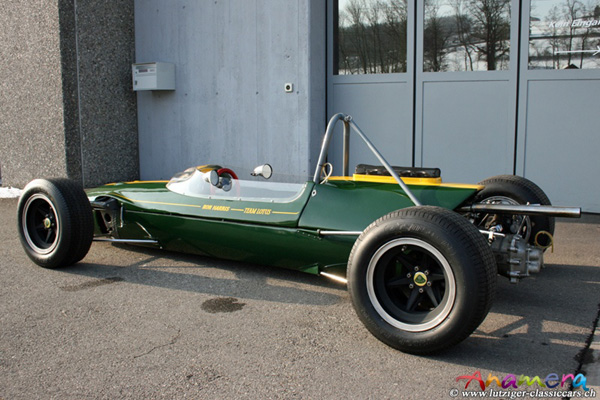
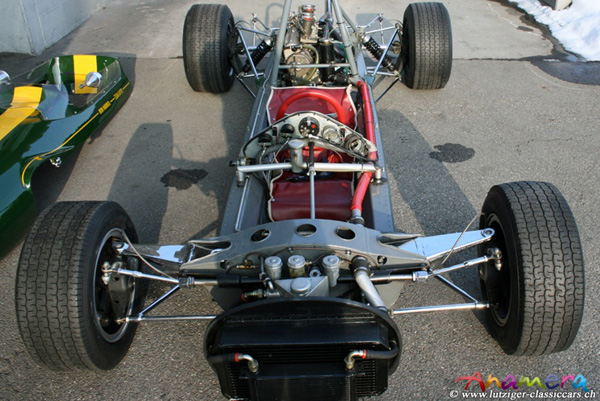
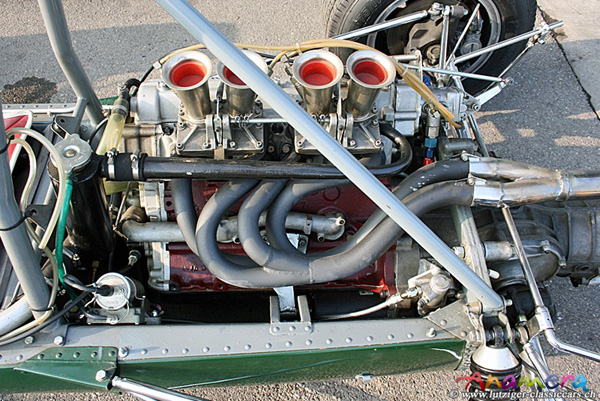
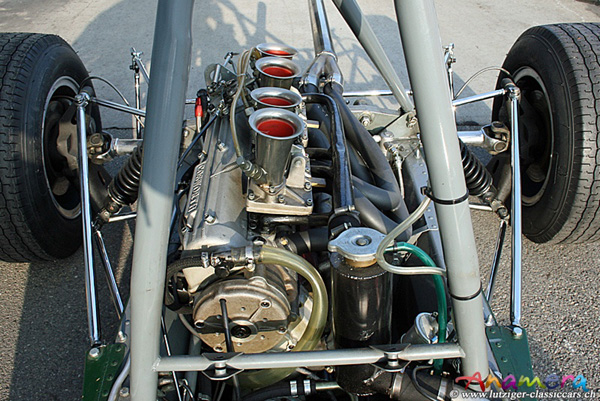
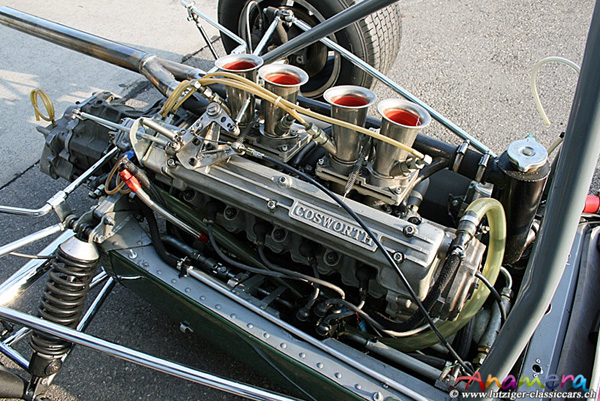
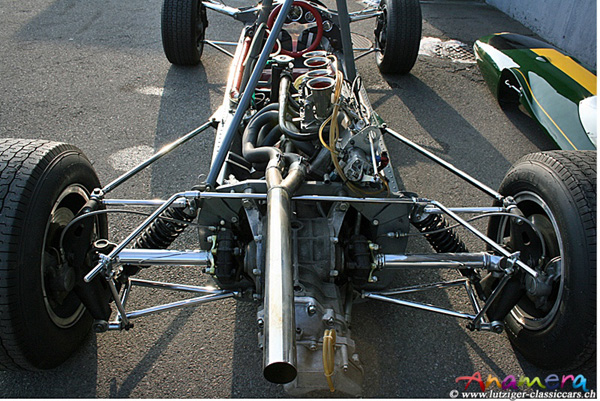
1965: SCC
| FVA Variant |
| Type | Year | Size | Output | Description |
|---|---|---|---|---|
| FVA | 1966 | 1598cc | 218 Bhp. | Formula 2, first Cosworth four-valve narrow angle head, 5 main 116E block, gear drive cams, won every championship 1967-71 |
| FVB | 1967 | 1500cc | 200 Bhp. | Experimental version of FVA to aid DFV development |
| FVC | 1969 | 1790cc | 235 Bhp. | Long-stroke FVA for Under 2 litre sports cars, won championship twice |
| FVD | 1975 | 1975cc | 275 Bhp. | Experimental, used BDG bore/stroke |
FVA - Four Valve, A type
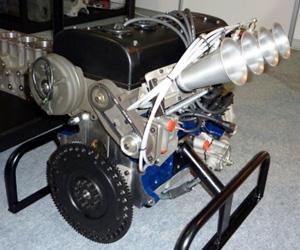
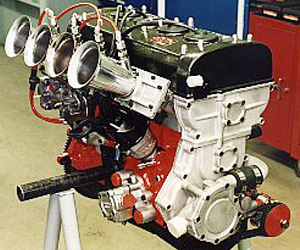
FVAの、狭いバルブ挟み角(40度)が実現したペントルーフ型燃焼室は先進的であった。FVAの4バルブヘッドの設計はDFVのヘッドにも採用されたが、DFVでは、バルブ挟み角は40度から32度へとさらに立てられた。
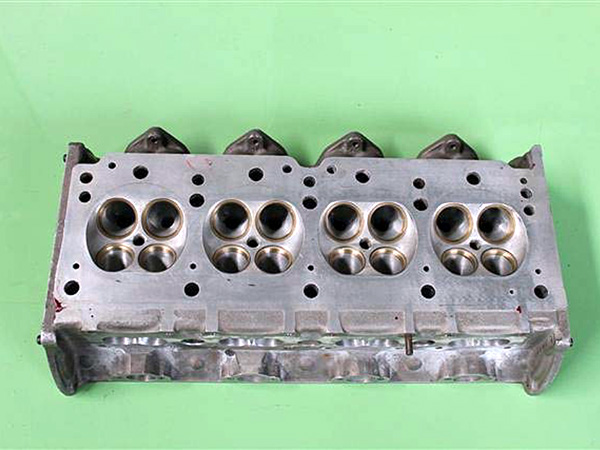
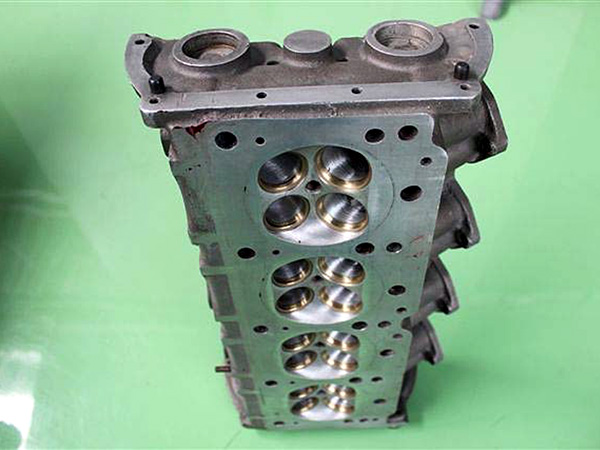
1966-71: The FVA (1.6L) for Fomula 2
The Cortina engine was also the basis for the FVA, an F2 engine introduced in 1966, and developed under the same contract as the DFV, for the new 1.6-litre engine rules.This engine featured 16 valves operated by twin overhead camshafts driven by a train of 9 gears. The metering unit for the Lucas mechanical fuel injection was rotated by gear and belt from the inlet cam, while the exhaust cam drove an alternator on the rear of the head.
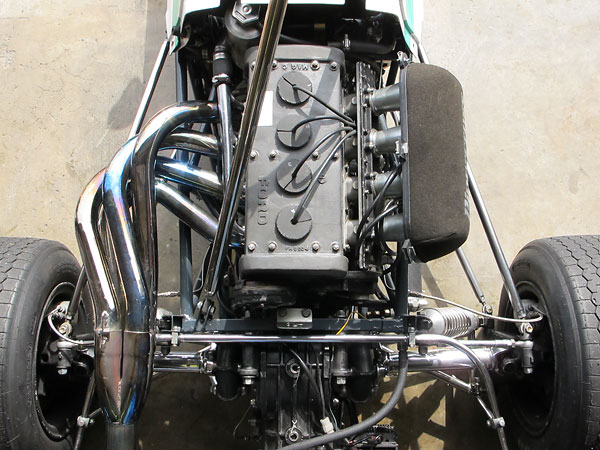
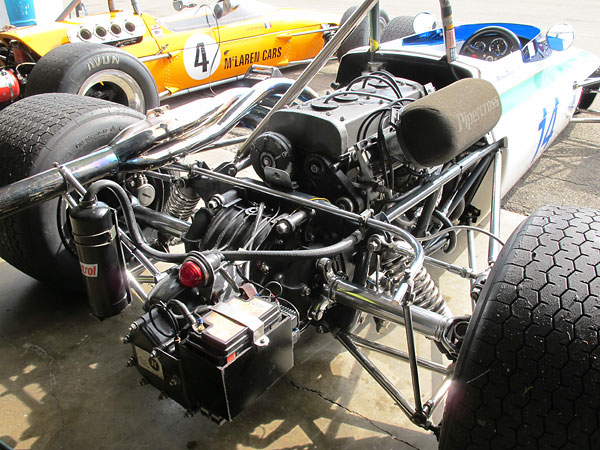
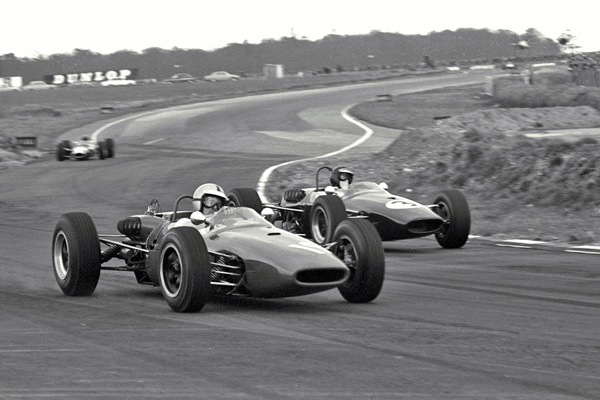
1967 Brabham BT23 driven by Jack Brabham powered by Cosworth FVA at Guards 100 F2 class
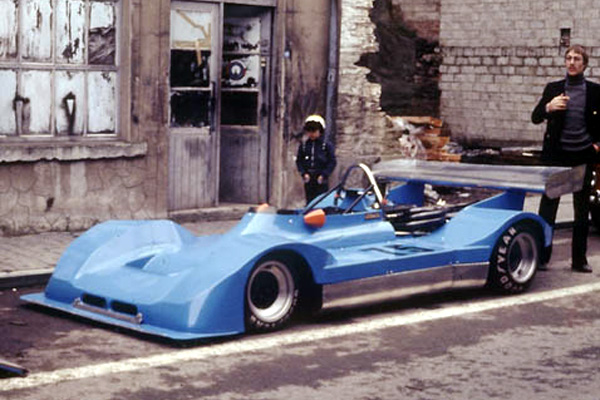
1978 LEBACQ DL9 powered by Cosworth FVA 1600
1971: The FVC (1.8L & 2.0L) for sports car race
It produced at least 225 bhp (168 kW) at 9000 rpm. This engine dominated the category until 1971, and was also used in sports car racing in 1.8-litre form as the FVC.The FVA was notable for being part of the same Ford contract that gave rise to the DFV; the cylinder head on the FVA pioneered many of Duckworth's ideas that would be used on the V8 engine.
A larger engine was designed for endurance racing in the mid 1970s, the FVC that displaced 1,976 cc. The FVC produced only 275 bhp (205 kW), down from the 325 hp (242 kW) that other twin-cam four cylinders such as the Hart 420S produced but was more reliable.
Two unusual features were gear-driven camshafts, plus a gear-driven alternator in the cylinder head. One was campaigned in the USA's CanAm series in 1978 in the Osprey SR-1, built and driven by Dan Hartill.
1969/70 Chevron B16 powered by 2.0L FVC
There were 23 Chevron B16 models built in 1969 and 1970 plus a B16 Spyder constructed in 1970. It had a spaceframe chassis and reinforced with steel to form a full monocoque. The basic fiberglass body design was created with the help of stylist Jim Clark.Mounted mid-ship was a Cosworth FVA Formula 2 engine. Cosworth's main engineer, Keith Duckworth, enlarged the capacity closer to two liters. It was given a different crank and a longer stroke, increasing the displacement from 1598cc to 1790cc. The result was a boost in horsepower to 245bhp.
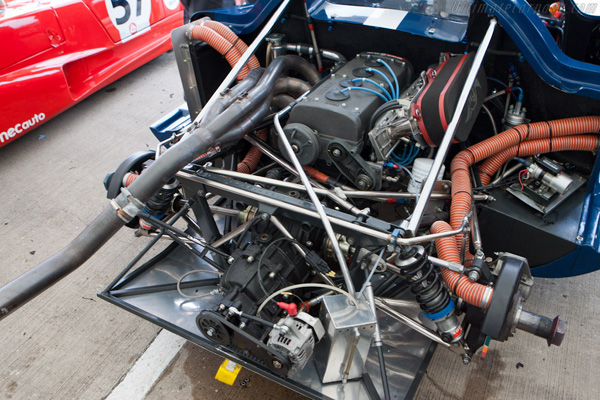
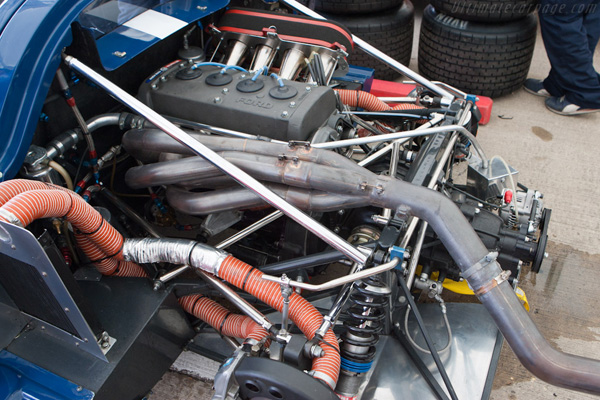
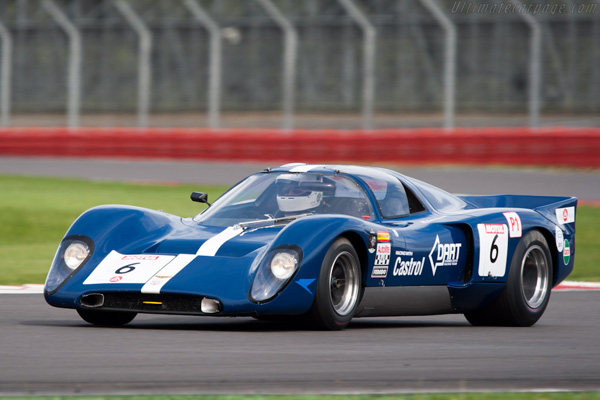
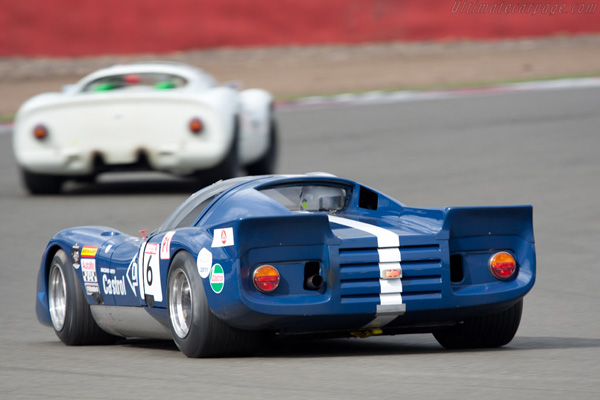
Chevron B16 Spyder
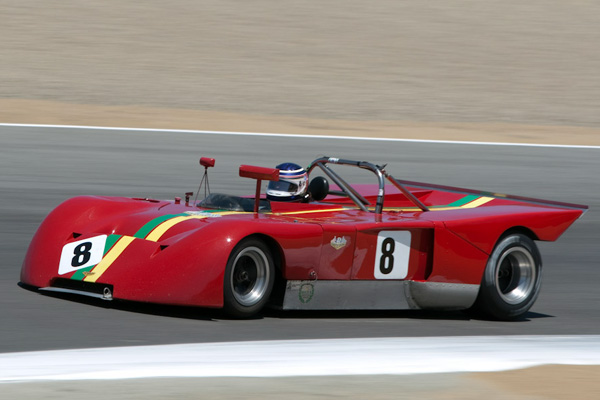
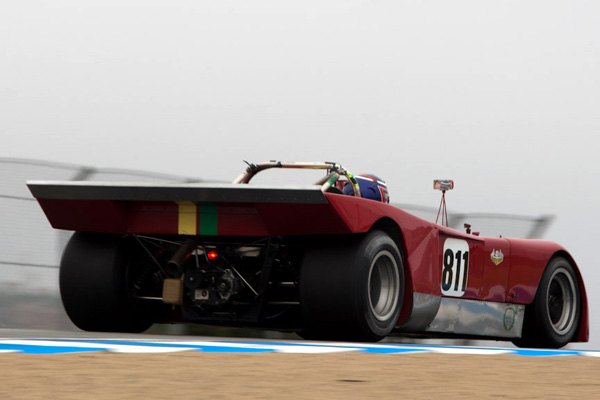
1071 Chevron B19 powered by 2.0L FVC
Following the success of the B16 Spyder during the latter part of 1970, Chevron put this model into production for 1971 as the Chevron B19. Powered by the 1790cc Cosworth FVC engine, the B19 finished second in the 1971 European 2-litre Sports Car Championship behind Helmut Marko's Lola T212. A lightly-modified Chevron B21 was built for 1972 and many B19s were updated to that specification.
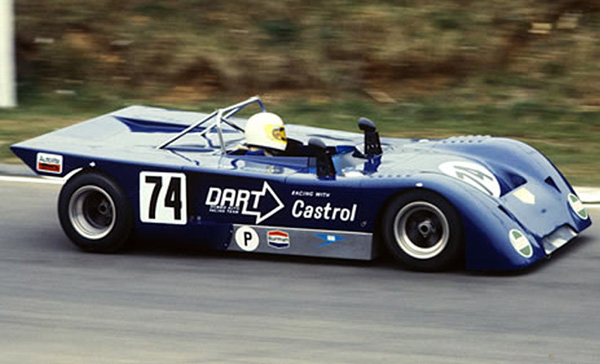
| BDA Variant |
In 1967 Harley Copp, Walter Hayes and Henry Taylor reached an agreement with Cosworth to develop an engine for Ford of England. The objective was to develop and engine with better performance than the twin-cam Lotus-Ford.
Keith Duckworth was engaged full-time on the DFV engine so Mike Hall took on the design responsibilities. The new engine was based on the Ford Kent block and would use the same basic cylinder head breathing as the earlier FVA 4-cylinder and the V8 DFV.
The agreement between Ford and Cosworth was for the design and development, not the building of engines. Design started in May of 1967 and the first 1600cc engine ran in June of 1968. The BDA means Belt-Drive Series A, which refers to the way the camshafts were driven. When introduced it was the first British engine to use cogged belts to drive the camshafts. The belt required was the same size as the one that had been developed and refined by FIAT for the 124 Sport Spider.
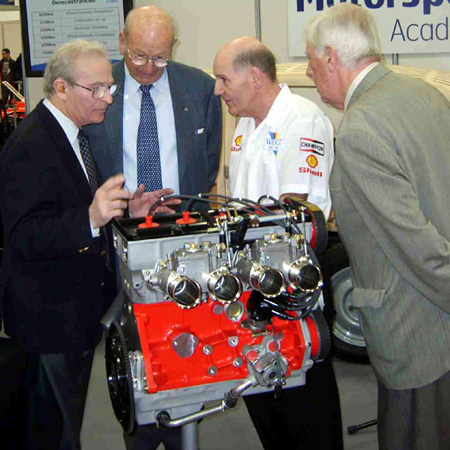
From Cosworth’s perspective the BDA took on a life of its own. In 1970 the BDB version was introduced. This was developed for Ford for use in the Escort RS1600 for rallying. The bore was increased for a capacity of 1700cc. According to Cosworth’s Mike Hall, the BDA just snowballed into the “Meccano set” of engines. By the mid-1970s the various BD engines accounted for over half of Cosworth’s turnover. Modifications were introduced by Cosworth and several other companies. The company continued to produce kits of parts to build up BD engines into the 1980s.
| Type | Year | Size | Output | Description |
|---|---|---|---|---|
| BDA | 1969 | 1601cc | 120 Bhp. | Belt Drive layout similar to FVA on taller Kent block |
| BDB | 1970 | 1700cc | 200 Bhp. | Escort RS1600 rally engine, sold as kits |
| BDC | 1970 | 1700cc | 230 Bhp. | Injected BDB for Group 2 Escort RS1600, also kits |
| BDD | 1971 | 1600cc | 200 Bhp. | Definitive Formula Atlantic Motor, also kits |
| BDE | 1972 | 1790cc | 245 Bhp. | Formula 2 first stretch to 2 litre rules, bigger bore, injection |
| BDF | 1972 | 1927cc | 270 Bhp. | Formula 2 next stretch, liners brazed in to cast iron block, very successful |
| BDG | 1973 | 1975cc | 275 Bhp. | Formula 2 and rally, development of BDF, later with aluminum block |
| BDH | 1973 | 1300cc | 190 Bhp. | Group 2 Sports cars, shorter stroke on shorter block |
| BDJ | 1974 | 1098cc | 150 Bhp. | Formula C, short stroke version for SCCA |
| BDK | none | -- | -- | reseved for forgotten project |
| BDL | ? | ? | ? | experimental turbo |
| BDM | 1975 | 1599cc | 225 Bhp. | Formula Atlantic, big valve, injected BDD |
| BDN | 1977 | 1600cc | 210 Bhp. | Formula Atlantic, Canadian Atlantic sealed motors this year only, sold as kits |
| BDO | none | -- | -- | not allocated |
| BDP | 1984 | 1975cc | 245 Bhp. | Sprint car, aluminum block, BDG bore/stroke, injected, methanol |
| BDQ | none | -- | -- | not allocated |
| BDR | 1983 | 1601cc | 120 Bhp. | BDA kits for Caterham Super Sevens, also 1.7 litre and 150, 170 Bhp. |
| BDT | 1981 | 1778cc | 200 Bhp. | RS1700T turbo, aluminum block, kits for JQF |
| " | 1981 | 1803cc | 250 Bhp. | RS200 BDT units redesigned, rebuilt, and enlarged |
| BDT-E | 1986 | 2137cc | 500 Bhp. | Evolution BDT by Brian Hart, Ltd. |
1969: The BDA - Belt Drive, A type
Cosworth increased its association with Ford in 1969, by developing a double overhead camshaft (DOHC) 16-valve inline four-cylinder engine for road use in the Ford Escort. Working from the Kent block, Cosworth created a 1,601 cc for homologation purposes.The camshafts were driven by a toothed belt, hence the name BDA, literally meaning "Belt Drive, A type". Running in Group 2 and Group 4 on either rallying or touring car racing, this engine could be enlarged to a maximum of 2,000 cc.
The nominal homologation at 1,601 cc capacity meant that BDA-engined cars competed in what was usually the top class (1600 cc and up) so were eligible for absolute victories rather than class wins.
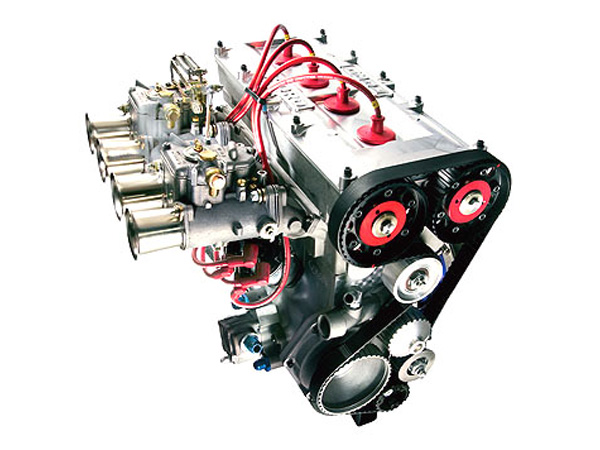
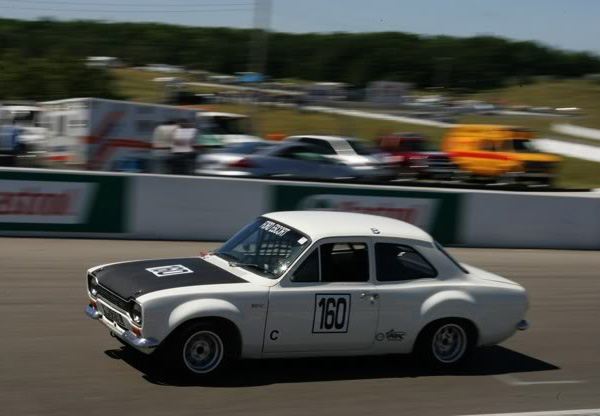
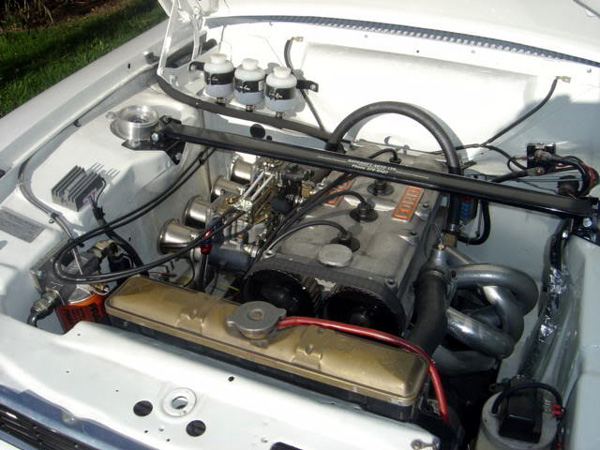
1971 FORD ESCORT RS 1600
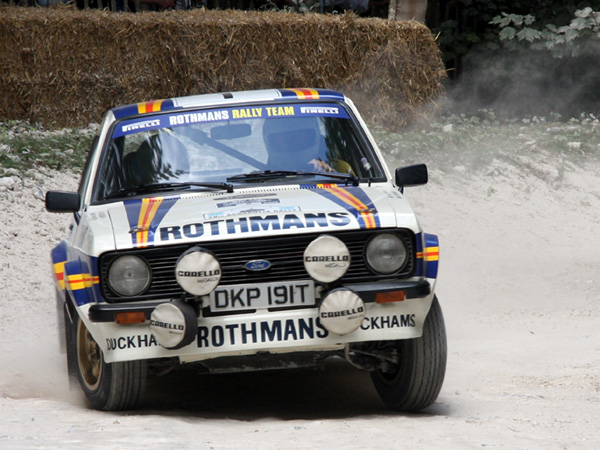
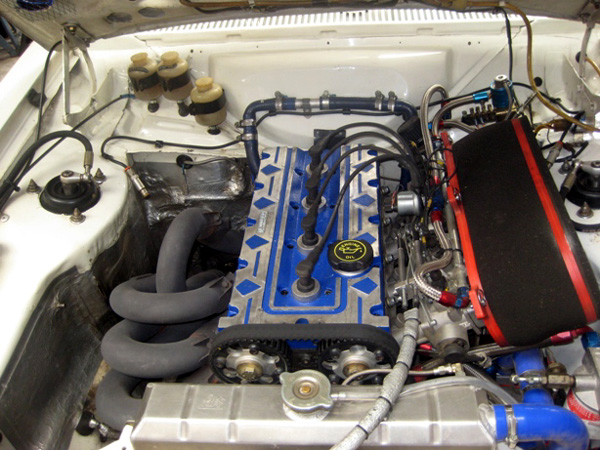
Ford Escort Mk.II RS 1800
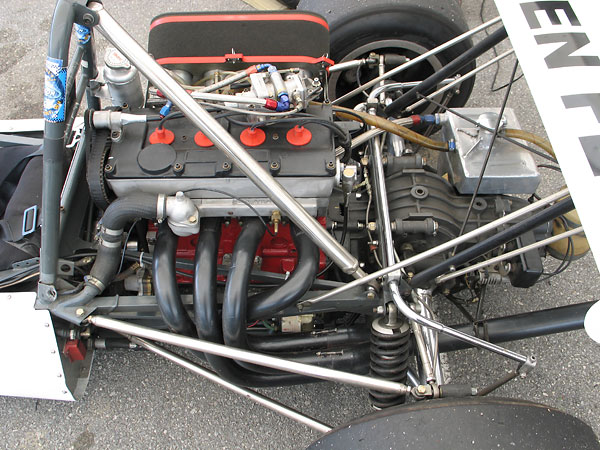
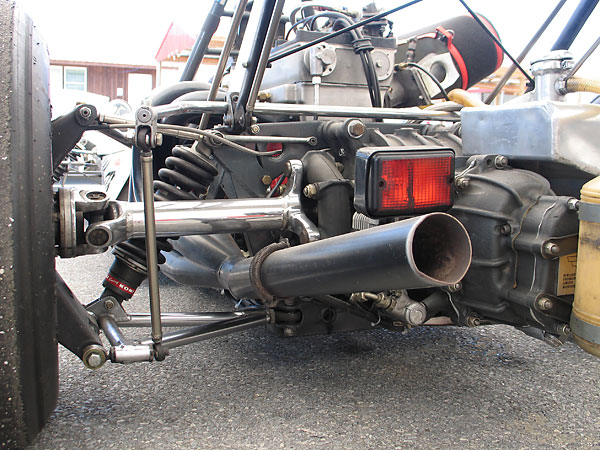
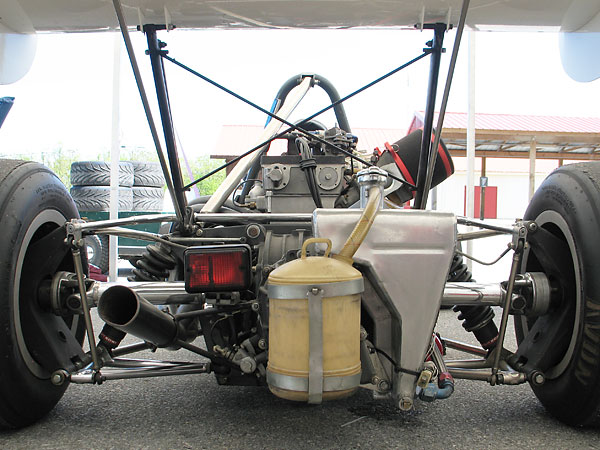
1971 Lotus 69 Formula B
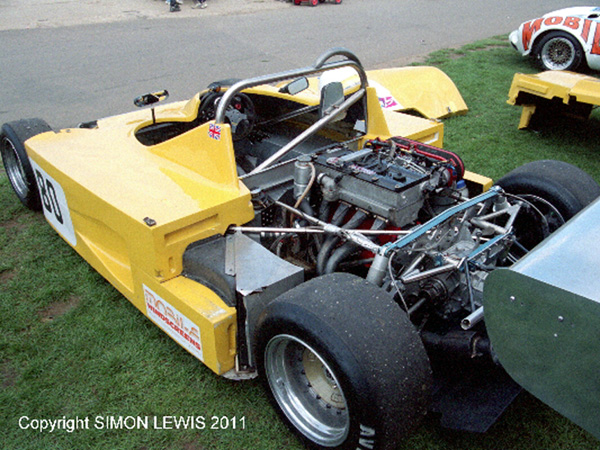
Lola T86/90 with Cosworth BDA
1970: The BDC (Fuel injected) / 1973: The BDG (Aluminium block)
Ford used the BDB and BDC for the Escort rallying and racing programs. The BDD was a 1700cc engine built for the emerging Formula Atlantic category. In 1972 the 2-liter BDE was built for Formula 2. The BDF was an improved development of the BDE. In 1973 the BDG was introduced, it featured another increased cylinder capacity and produced 275 bhp. The first versions had a cast iron block, but later engines had an aluminum block.The BDG had a capacity of 1975cc/120.5 cu in. The compression ratio was 12.0 to 1 for a horse power rating of 280 at 9250 rpm. The cylinder numbering was 1 - 2 - 3 - 4 front to rear with a firing order of 1 - 3 - 4 - 2 .
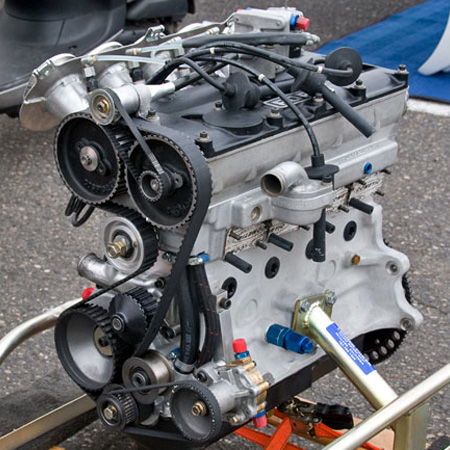
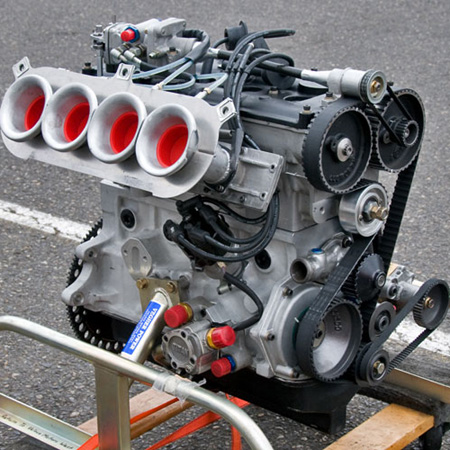
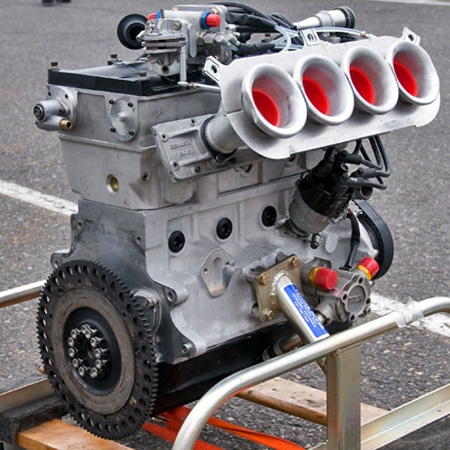
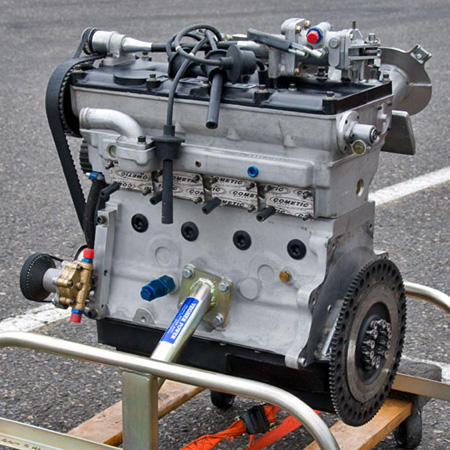
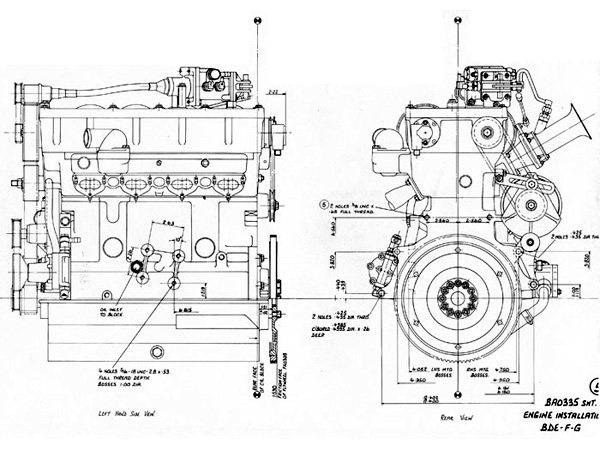
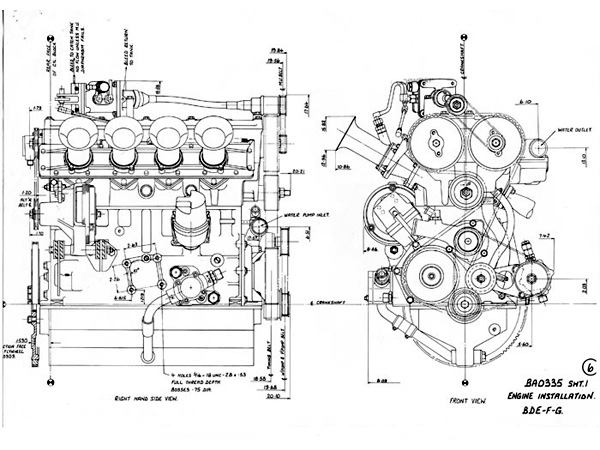
In 1970, the BDC evolution received fuel injection for the first time. Two years later, the BDA series was being used in Formula 2, first at around 1,800 cc, until reaching a maximum of 1,975 cc in 1973, as the developed BDG form of the engine, which also received an aluminium block.
The block could also be shortened, starting with the 1,599 cc Formula Atlantic engine in 1970, followed by the 1,100 cc and 1,300 cc variants for SCCA club racing and sports car racing.
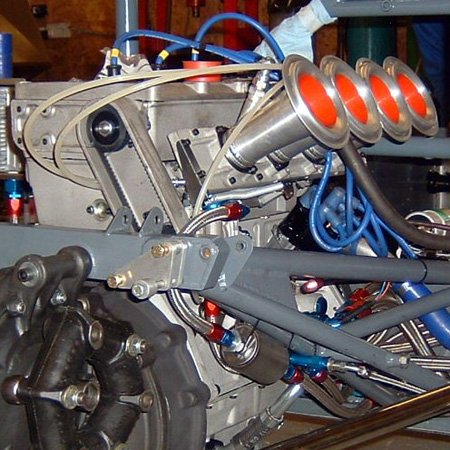
BDG
Supercharged 785cc for the British Hill Climb Championship
There was even a one-off 785 cc version built by Cosworth employees Paul Squires and Phil Kidsley; fitted with a Lysholm supercharger it was installed in a Brabham BT28 Formula 3 chassis and competed in the British Hill Climb Championship as the Brabham-Lysholm.The BDR
In the 1980s, the engine saw its final incarnations, the 1,700 cc BDR, used in the road-going version of the Caterham.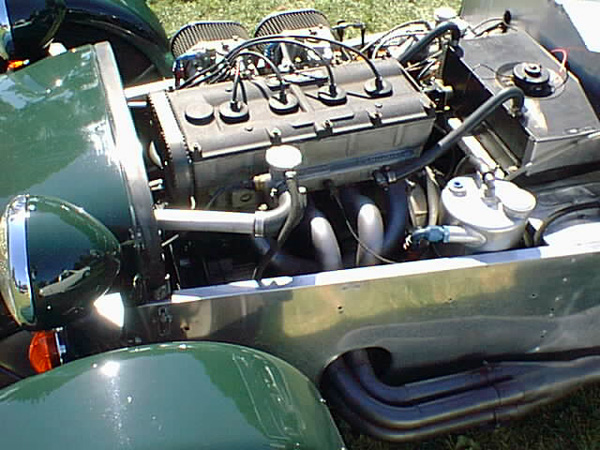
The BDT / The BDT-E
The 1.8-litre BDT, which powered the never-raced Escort RS1700T, and the more competitive Ford RS200, which was created for Group B rallying. A 2,137 cc evolution model was developed by Brian Hart just as Group B was cancelled by the FIA. The BDT-E turbocharged versions gave over 600 bhp (447 kW; 608 PS) in Group B rallycross configuration.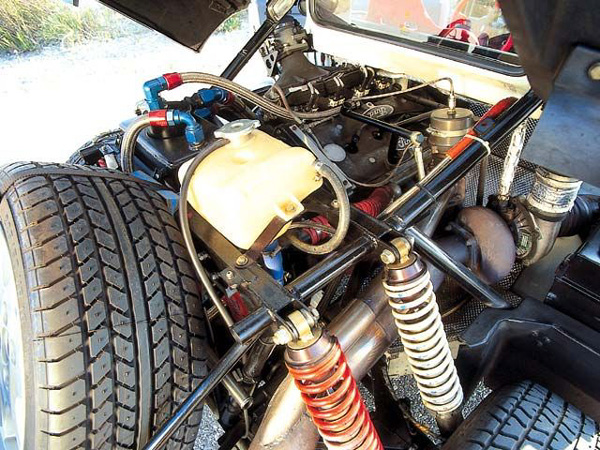
RS200のエンジンはコスワースBDAをベースにギャレット製ターボを装着したBDTという水冷式直4DOHCエンジンで、排気量は1803cc。過給器係数を掛けて2524.2ccとなり、2500CC以上3000CC未満のクラスに位置づけられる。この排気量はエボリューションモデルでの排気量追加を意図した設定と考えられる。
BDAベースではあるが、ヘッド、ブロック、クランク、クランク支持部分構造に至るまで専用設計となっており、パーツ単位の互換性はほとんどない。市販車は250ps,300ps,350psの3タイプが供給された。ワークスカーは450psと発表されている。
RS200Eと呼ばれる競技用モデルの排気量は、過給器係数1.4を掛けて3リッター未満となる2.1リッターとなっている。このエンジンはBDT-Eと呼ばれるが、コスワースエンジンのチューンで実績のあるブライアン・ハート社で製作されたが、ホモロゲーションに間に合わなかったため実戦では使用されていない。
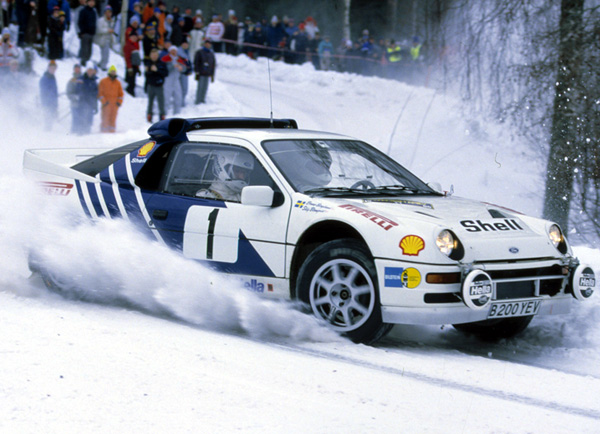
In 1970, Ford asked Weslake and Co of Rye to build the BDA Engine for them, and by the end of 1970 the production line had been installed at Rye and production was under way.
The Hart 420R owes much to the BDA series, being essentially an aluminium-block derivative using similar heads.